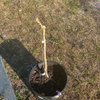How do I build a dry well for lawn drainage?
dcb1_2008
14 years ago
Featured Answer
Sort by:Oldest
Comments (10)
laag
14 years agorhodium
14 years agoRelated Professionals
Finneytown Landscape Architects & Landscape Designers · Allentown Landscape Contractors · Eureka Landscape Contractors · Fort Payne Landscape Contractors · Holland Landscape Contractors · Mission Bend Landscape Contractors · Ringwood Landscape Contractors · Shoreview Landscape Contractors · Glen Ellyn Decks, Patios & Outdoor Enclosures · Paradise Valley Decks, Patios & Outdoor Enclosures · Quincy Decks, Patios & Outdoor Enclosures · Rogers Decks, Patios & Outdoor Enclosures · Dent Stone, Pavers & Concrete · Cedar Hill Swimming Pool Builders · Pflugerville Swimming Pool Buildersbahia
14 years agogratefulgardener3300
14 years agomadtripper
14 years agonatural-sens
14 years agopippi21
14 years agoanoid1
14 years agoanoid1
14 years ago
Related Stories

BATHROOM DESIGNConvert Your Tub Space Into a Shower — Waterproofing and Drainage
Step 4 in swapping your tub for a sleek new shower: Pick your waterproofing materials and drain, and don't forget to test
Full Story
LANDSCAPE DESIGNGarden Walls: Dry-Stacked Stone Walls Keep Their Place in the Garden
See an ancient building technique that’s held stone walls together without mortar for centuries
Full Story
MOST POPULARMeet a Lawn Alternative That Works Wonders
Carex can replace turfgrass in any spot, is low maintenance and adjusts easily. Add its good looks and you’ve got a ground cover winner
Full Story
GARDENING GUIDESGreat Design Plant: Sunrose Dazzles on Dry Slopes
Abundant blooms and attractive foliage make this plant a welcome sight in sunny, well-drained spots
Full Story
GARDENING GUIDESGardening Solutions for Dry, Sandy Soils
Has your desert or beachy site withered your gardening creativity? Try these ideas for a beautiful, easy-care landscape
Full Story
FRONT YARD IDEASBefore and After: Front Lawn to Prairie Garden
How they did it: Homeowners create a plan, stick to it and keep the neighbors (and wildlife) in mind
Full Story
GARDENING GUIDESHow to Plant a New Lawn From Sod
Take the quick-start route to turf with sod; these installation guidelines will help ensure a healthy and long-lasting lawn
Full Story
EARTH DAYThe Case for Losing the Traditional Lawn
Work less, help the environment and foster connections by just saying no to typical turf
Full Story
BEFORE AND AFTERSSee 6 Yards Transformed by Losing Their Lawns
Wondering whether a turf lawn is the best use of your outdoor space? These homeowners did, and they found creative alternatives
Full Story
SAVING WATERHouzz Call: Are You Letting Go of Your Lawn?
Many facing a drought are swapping turf for less thirsty plantings. If you’re one of them, we’d like to hear about it
Full StoryMore Discussions










JSL Exteriors Landscape Design Build